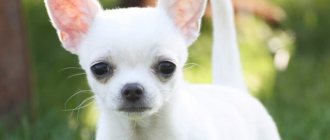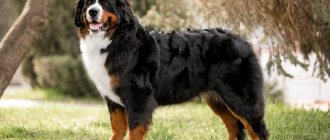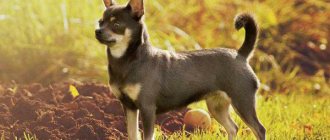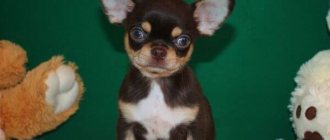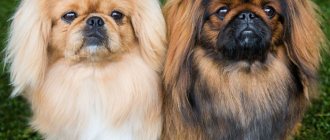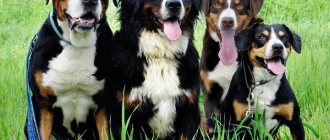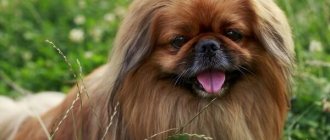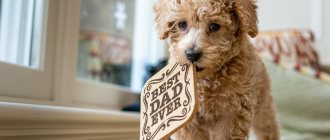Origin of the Chihuahua Pocket Dog
According to the hypothesis of historians, the Chihuahua breed originates in the Mexican state of Chihuahua. The priests of the Aztec tribes considered them sacred and kept them close to them for protection from evil spirits. They called the dogs Techichi. Even after death, the owner and pet were buried together, so that the dog would remain a guard in the afterlife.
In the sixteenth century, the breed was exterminated by the Spanish conquistadors, who seized the lands of the Indians and Aztecs. They ate dogs and used them to catch rats on ships. Although there is a version that the Chihuahua is a mixture of the Chinese Crested and Techichi.
Three hundred years later, the Americans restored the breed, and since the twentieth century, it has spread throughout the world.
In 1904, an entry was made into the US stud book, in 1923 the first club of mini-dog owners was created, and by the mid-twentieth century, 24,000 individuals were registered.
Mexican Chihuahuas came to Russia in 1959. Fidel Castro brought Mishter and Mushinka as a gift to Nikita Khrushchev. Later, a bitch named Doll was brought from Europe, from which the history of the breed in Russia began.
Features of this breed
The main feature of the breed is its miniature size. Thanks to the size of the tiny ones, it is easy to travel - Chihuahuas can be taken with you to shops, restaurants, or transported not in the luggage compartment, but in the cabin of the plane. They tolerate travel and flights well and are considered excellent companions for their owners.
They are unpretentious to living conditions, content with walks on the balcony, the main thing is that their beloved owner is nearby. By nature they are jealous, reckless and touchy, they like to feel in first place.
Types of crossbreeds
The following crossbreeds of Chihuahuas exist with other breeds: Pinscher, Pekingese, Yorkshire Terrier, Pug, Dachshund, Pomeranian, Jack Russell Terrier and Toy Terrier.
Also read comparison of Toy Terrier and Chihuahua.
What types of Chihuahuas are there?
Depending on the criteria considered, there are several types of Chihuahuas. The following sizes of pocket pawls are acceptable:
- micro - weight no more than 1 kg, they often get sick because they are considered the result of a selection error;
- mini – up to 1.5 kg, prone to injury;
- standard - the largest (from 1.5 to 3 kg), have good health.
Depending on the body shape of the Chihuahua, there are two types:
- cobby – short legs, large head, well-developed muscles;
- dir – “deer” type, refined and refined with a narrow muzzle and undeveloped muscles.
Based on their appearance and coat type, dogs are divided into four groups:
- short-haired - Chihuahuas with medium length hair, not recognized by the standard;
- long-haired - a distinctive feature is feathering on the paws, ears, tail, neck;
- smooth-haired - Chihuahua with a tight-fitting, hard coat;
- hairless - velvety, without hair, with an attractive skin color.
Main types
There are two types of Chihuahua based on body type :
- Cobby;
- Dir.
The dog has large ears and eyes, the irises of which match the coat color. The hind legs are more powerful than the front legs, and the Chihuahua moves with dignity.
According to the length of the Chihuahua's coat, there are:
- Long-haired;
- Short-haired.
Short-haired Chihuahuas hardly shed and have no odor. Dogs with long coats have only the second feature.
Chihuahuas are also conventionally divided by size into:
- standard;
- mini;
- micro.
Characteristics, description of the breed
Before purchasing a small pet, it is worth getting as much information as possible about the Chihuahua, its disposition, habits, and state of health. Don't think that a small dog can be put in a bag and carried around like a toy. She will definitely show her character, which in fact will turn out to be quite hot and unrestrained.
Breed standards
Breed standards were approved in the middle of the last century. At the age of one year, the Chihuahua becomes an adult, but representatives of the breed reach full physical development by one and a half years. During this period, the characteristics should be as follows:
- the body is compact, harmoniously built;
- round skull;
- the back is wide, strong;
- voluminous breasts;
- limbs are straight;
- medium length tail;
- Various coat colors, except merle.
Appearance of a Chihuahua
The modern appearance of the breed was the result of many years of breeding experiments and crossing Chihuahuas with German Spitz, Toy Terriers, and Pinschers. In appearance, they have gone far from their Mexican ancestors - their voice has become sonorous, while still an adult dog looks miniature, its movements are graceful and energetic. One of the required qualities is friendliness; the breed lacks timidity and delicacy, which is noticeable even in appearance.
Height and weight of an adult dog
The Chihuahua is recognized as the smallest dog in the world. The height at the withers of an adult is 17-25 cm. Weight depends on what species the dog belongs to. For standard it is 1.8-3 kg, for mini – 0.5-1.8 kg. Breeding males should weigh 1.2-1.3 kg, females - up to 3.5 kg. If the weight of females is less than 1.5 kg, they are not used for mating, since there is a high risk of problems with childbirth.
Head, jaws and teeth
The shape of the Chihuahua's skull can be of two types - apple-shaped or deer-shaped. The second type is the least preferable; it indicates that the individual is not purebred. Until 2010, the standard feature of the breed was an open fontanel. Today this is considered a vice.
The dog's jaws close like scissors. The total number of teeth is 42 (incisors – 12, canines – 4, molars – 10, premolars – 16). The mouth closes completely; an incorrect bite is unacceptable.
Nose, eyes, ears
The Chihuahua's nose is large, slightly snub-nosed, with a black tip or to match the main color of the animal - brown, pink-coffee. For show class, the first option is preferable.
The eyes are wide apart, slightly protruding, round in shape, and look expressive. The color of the iris is dark brown, but lighter shades are not a disqualifying feature.
The ears are slightly pointed, large, wide at the base, and located at an angle of 45⁰ relative to the line of the eyes. For long-haired breeds, a slight drooping of the ears is acceptable.
Neck, torso
The Chihuahua's neck is of medium length, with a slight curve, and is more massive in males than in females. The body is compact, the back is short, flat, and the lower back is muscular. The chest is deep and wide. The stomach is tucked, its sagging is undesirable.
Chihuahua skeleton
The dog's skeleton is harmonious, externally strong, balanced. The chest is voluminous, reaching the elbows. In cross section, the ribs give the body a heart-shaped shape.
Limbs, tail
The Chihuahua's limbs are straight, long, and symmetrically arranged; the hind limbs are stronger and more muscular. The angle of articulation of the shoulder and shoulder blade is pronounced. Forearms are straight, harmonious length. Pasterns inclined, flexible.
The paws are oval in shape, with widely spaced toes and well-developed soft pads. The claws are curved and of medium length.
While running, the hind legs move almost parallel to each other, the back is straight, the head is raised. The Chihuahua's gait is energetic, springy, with a wide stride.
The tail is voluminous at the base, tapering at the tip. Length is average. According to the standard, its position is saber- or crescent-shaped.
Wool, popular colors
Long-haired Chihuahuas have a smooth, soft, slightly wavy coat. The undercoat is small. Long guard hairs grow on the back of the legs, neck, ears and paws.
Shorthairs are distinguished by a small coat that fits tightly to the body. The longest hair is on the tail and neck, the shortest is on the ears and head.
The color can be anything except merle, which is considered a defect in the breed. Among the most popular:
- black;
- black and white;
- chocolate;
- sable;
- brindle;
- lilac;
- ginger;
- brindle.
Character
Chihuahuas are very sociable, easily socialized, get along with representatives of the same small breeds, but relationships with large ones are more difficult. Dogs constantly demand attention and ask to be held, so they seem intrusive and annoying. They quickly establish contact with children, but you need to remember that one careless movement and the child can cause serious injury to the animal.
Strangers for Chihuahuas are a potential danger, which they bark loudly, but after meeting them they quickly get used to it and accept it.
Adults are distinguished by restraint and slight arrogance. If they notice disrespect for their person, they respond with contempt. They are jealous and do not tolerate it when the owner pets or treats another dog.
Dog intelligence
The small dog has high intelligence and cunning, and is capable of manipulating its owner to attract attention. Easily analyzes a situation and turns it to his advantage. In sports competitions (agility) she shows amazing dexterity and intelligence.
Training must begin at three months, and must be persistent and persistent, since later the Chihuahua will develop a character that will be impossible to correct.
Owner reviews
We got our Chihuahua from our sister. They got her as a toy for their daughter, but there was sorely not enough time to care for her. Since we were given a puppy, we had to train the baby to go potty and follow a daily routine. We feed her by the hour, about every 4 hours. She's used to it. He eats well, no problems with it. We feed Baby with special dry food and give him boiled water. We learned to go to the toilet while wearing a diaper in literally 2-3 days. She quickly realized how to behave.
We do not allow other people to touch or cuddle our Baby. She must know who is the master and who is the stranger. This must be taught for her own safety, so that no one poisons or steals her.
In winter, we move her house closer to the radiator, and also provided her with a blanket. Sometimes in the morning she jumps into our bed.
Of the whole family, she loves her husband most. I’m ready to sniff and lick him for hours. I also became friends with my son. Either he brings her toys, or she brings him toys. He loves to hide under the sofa and suddenly jump out from under it.
I recommend this breed to all lovers of small dogs, but do not forget that it requires care.
Julianna, Peter.
My mother loves cats, but I wanted a dog. I barely managed to persuade her to buy me a Chihuahua. I advise you to buy exclusively from specialized nurseries. I chose from puppies brought all the way from Belarus. We always joke about Businka about this, because she really loves potatoes.
A couple of years later, friends who work in a pet store offered me another Chihuahua for free. People bought it three times, but after some time they returned it. When I brought this dog-child to myself, I immediately saw that the unfortunate animal was being abused. She pressed herself to the floor when I raised my hand up to take something from the shelf and could even wet herself. But gradually we managed to calm her down and now she is a happy tiny dog named Pooh.
I want to say that when choosing a dog, check yourself to see if you can love and care for it. Yes, you are the master, but this does not give you the right to be aggressive. Only love, encouragement and “carrots” will help you train a wonderful and obedient pet.
Olga, Tyumen.
Dog care and maintenance
A small decorative dog is not intended to live on the street; it is kept in a house or apartment. Care is simple: you need to monitor the condition of the eyes, ears, claws, fur, and properly organize the animal’s nutrition and walking. It is equally important to follow the vaccination schedule, monitor the health of Chihuahuas and bring them to the veterinarian on time.
Eye and ear care
The eye sockets of Chihuahuas are small, and the eyeballs are impressive in size, so it is not uncommon for them to have increased lacrimation. The cause may be dust, wind and disease. Around the eyes, spots often form that need to be removed using cotton pads soaked in cleansing lotions.
Periodically, preventive cleaning of the ears is carried out, without which infections, the development of fungus and the penetration of mites are possible. Otherwise, the pet experiences discomfort, itching and pain. The ears are cleaned of wax and dirt accumulations using cotton pads, swabs and lotion.
Grooming
Grooming consists of periodically combing the coat. Thanks to the procedure, they not only remove lost hairs, but also stimulate blood circulation in the skin and help saturate the hair follicles with nutrients.
For smooth-haired pets, it is enough to brush them with a glove or brush once a week, for long-haired ones - twice as often, and during shedding - every day. You can remove dead hairs more efficiently using a furminator; removing tangles is easier with a stainless steel comb.
Feeding your pet
Experts do not recommend feeding Chihuahuas only granules, even high quality ones. It is necessary to alternate wet and dry food in compliance with the volume of the daily ration (60 g per 1 kg of animal weight).
You should not combine natural products and industrial feeds, since mixing often provokes urolithiasis.
The natural diet of Chihuahuas should include:
- lean meat;
- offal;
- eggs;
- boiled fish;
- fermented milk products;
- rice, corn and buckwheat porridge;
- raw or steamed vegetables.
Sometimes they give fruit as a treat. Bone meal, fish oil and vegetable oil are mixed into the food.
Small puppies are fed up to six times a day, starting from three months - four times, from six months - three times. From the age of one year they switch to feeding twice a day, and old dogs prone to gaining excess weight are given food once. Food should be at room temperature, access to clean water should be available around the clock.
Hygiene procedures
Domestic Chihuahua dogs are bathed using a special shampoo no more than once every three months. This can be done more often without detergent, especially if your pet likes such procedures. The water should be warm (35-40 ⁰C), while swimming, make sure that it does not get into the ears. At the end of the procedure, the wool is carefully dried with a towel and dried with a hairdryer.
Particular attention should be paid to the claws. Like most small breed dogs, Chihuahuas do not wear well naturally due to their low weight. If your pet makes a characteristic knocking sound while running or walking, then it’s time to shorten its claws. Chihuahua puppies have their hair cut once every two weeks, and adult dogs - monthly. Use nail clippers and a nail file to remove uneven surfaces.
Dog toilet
Quite often, Chihuahuas have difficulties with toilet training. You need to ask the previous owner if he was trained, and how this happened (for a newspaper, a diaper). At home, you need to organize a place and provide the dog with a tray with low sides. At first, she experiences stress; digestive and bowel problems are possible, which gradually go away on their own. During this period, the puppy can make puddles and go to the toilet anywhere. You can't scold or shout at him. You need to monitor, correct actions, and take your pet to the litter box. The training period lasts from two to four weeks. If the breeder has given him a diaper or newspaper, they put them in the tray and reinforce the already developed habit.
They start taking them out for walks after vaccinations and quarantine. Chihuahuas are not the most patient breed, so pets are likely to go to the toilet both indoors and outdoors.
Walking outside
Chihuahuas do not need frequent walks in the fresh air. They just need to run and frolic a little to get a boost of energy for the whole day. Before you start regular walks, you need to accustom your pet to a leash. You can let him off only in places where there is no danger or possibility of conflicts with other dogs.
Chihuahuas do not tolerate low air temperatures well; in the cold season they will need warm overalls for walks. When moving long distances, it is better to use comfortable carriers with good ventilation.
Health and common diseases of Chihuahuas
The main part of the pathologies affecting a small dog is associated with mistakes made during breeding of the breed. By surrounding your pets with care and attention, you can avoid most diseases. Problems need to be identified as early as possible in order to help the Chihuahua and prevent complications. Among the most common diseases:
- Dislocation of the patella - inherited from parents, first manifests itself at 4 months with lameness in the puppy, sometimes surgical intervention is necessary.
- Hypoglycemia is a dangerous condition characterized by a sharp decrease in blood glucose, apathy, lethargy and complete disorientation.
- Tracheal collapse - the tracheal rings cease to be elastic, lose rigidity, blockage of the airways may occur, and insufficient oxygen supply to the blood.
- Hydrocele of the brain is a hereditary disease caused by the birth of puppies with an open fontanel.
- Epilepsy is a chronic neurological disease accompanied by seizures.
- Obesity – occurs when a dog is overfed.
- Pathologies of the oral cavity - the formation of plaque and tartar due to difficulties in caring for teeth and gums.
- Urolithiasis is difficulty urinating in advanced age.
- Scleritis is an inflammation of the sclera of the eye that can result in blindness.
- Reverse sneezing is grunting and snoring due to a defect in the muzzle.
Education and training
Chihuahuas are a willful breed that is very difficult to force into obedience. The dog understands commands very well, but is in no hurry to carry them out. She can be trained if she is encouraged and praised. Can perform tricks, commands and go through obstacle courses.
If she participates in exhibitions, she will be taught to stand on a table, run with the handler and show her teeth. As a result of proper socialization and upbringing, a Chihuahua should behave decently in crowded places - not bark, not lunge at people passing by, and not fall into a stupor of fear.
It is not difficult to teach your pet the basic commands: “Come to me”, “Stand”, “Place”, “Fu”. It is quite possible to perform simple tricks (jumps, somersaults), but you need to be careful. Dogs are easily injured - dislocations and fractures are not uncommon for them.
Habits and behavior
If the training process goes wrong, the Chihuahua may develop bad habits that become difficult to get rid of. Among the most common:
- They go to the toilet anywhere.
- They have a tendency to eat feces.
- They howl and bark for no apparent reason.
- They love to burrow in the ground.
- They beg for food from the common table.
- Tend to be aggressive towards strangers.
- They chew and spoil things.
To avoid such habits, education and training are carried out from a very early age. You should not resort to cruel methods, since they have no effect. In response, the dog will harbor anger, it will develop fear and distrust of the owner. The method will deprive a person of a true friend and companion in the person of a Chihuahua, and one should forget about fidelity forever. Correct behavior is formed only on the basis of the dog’s natural instincts with the help of affection and encouragement.
Relationships with children
The relationship between Chihuahuas and children cannot be called simple. Many breeders are not eager to give puppies to a family with a child. The explanation is simple: dogs are quite fragile, and they can suffer physical harm from a tight hug. Children are not always able to control their coordination and efforts and, unwittingly, can injure their chihuahuas. In response to the insult, the dog will bite the baby and scare him. If you want to give your child a small decorative dog, you should wait until he is 8-9 years old.
What to feed?
Since there are two types of feeding dogs, you must first decide what you prefer to feed your pet and not deviate from the chosen path. Mixing industrial feed and natural products is strictly not recommended.
If you prefer industrial food, it is better to use premium products designed for small breeds of dogs. The amount of food depends on the age and weight of the Chihuahua. So for 1 kg of an adult dog you need 50-80 grams of dry food.
If you prefer to cook your own food, consider the advice of professionals.
- Meat . You can give veal, beef, horse meat, turkey chicken and sea fish fillet. Once a week, offer offal - heart, liver, kidneys. To avoid infection with helminths or salmonella, heat the meat. It is forbidden to feed pork, lamb, chicken skin, pollock fillet, and bones. Fish should be given 1-2 times a week.
- Vegetables . It is preferable to carry out heat treatment. Potatoes are undesirable; as an exception, offer only boiled ones in their jackets. Carrots are incredibly healthy, but to absorb vitamins you need to add 1-2 coffee spoons of vegetable oil.
- Fruits . Bananas (a source of potassium) and apples (vitamins, minerals and pectin, which removes harmful substances from the body) are considered especially useful. Be careful with fruit and don't offer it too often.
- Cereals . Cook buckwheat or rice porridge for your pet.
- Eggs . Once a week it is worth giving a boiled egg or an omelet. Make sure your baby doesn't have a protein allergy.
- Dairy . Low-fat cottage cheese, yoghurts (without fruit fillings), and kefir are recommended. Whole milk should not be given.
An adult two-kilogram dog should eat 100-150 grams per day. The amount depends on the activity of the Chihuahua. At the same time, two thirds of the products should contain protein and only 1/3 should contain plant foods. If you have chosen natural products for your pet, do not forget to periodically take a course of vitamins.
How to create conditions for a Chihuahua in an apartment
There is always room for such a small dog as a Chihuahua, even in the smallest apartment. There will be no inconvenience from it either for the owners or for their neighbors, provided that it is properly raised and trained.
It is better to pick up a puppy from the breeder in the morning or afternoon; before nightfall, he should look around the new place and get used to his surroundings a little. Before the pet arrives, they prepare a place for him to rest - place a lounger in a secluded corner of the apartment away from drafts and heating appliances. It is necessary to ensure safety - to protect access to electrical wires, mousetraps and chemicals.
You should purchase the necessary accessories at the pet store:
- tray;
- carrying;
- harness and leash;
- grooming tools;
- bowls for food and water;
- dog toothpaste, lotions, shampoos;
- anthelmintics;
- clothing for inclement weather.
Gradually, the puppy is accustomed to a nickname, which he responds to after 3-5 days, to the toilet, vaccinated, and later taken outside.
Learning ability
The Chihuahua is a naturally intelligent, quick-witted, attentive and alert dog breed. It lends itself well to training using praise and encouragement. The dog is able to carry out commands, perform feasible tricks, and go through specialized obstacle courses. An excellent competitor in dog sports competitions for intelligence and dexterity (agility), and exhibitions. Often takes prizes. Accustomed to the tray and toilet, correct manners of behavior.
Training begins in puppyhood, from 3 months of a puppy’s life. Adults are reluctant to learn due to their mature personality and individual character.
Lifespan of a pocket dog
Chihuahuas are long-lived breeds. On average they live 12-15 years, but some representatives are slightly longer. So, a male named Megabyte was born in 1994, and died in 2014, having lived 20 years.
According to statistics, females live 2-3 years longer than males. This is due to their balance and caution. Mini-sized dogs have the shortest lifespan among representatives of the breed. They die at 9-12 years of age.
In terms of human age, a Chihuahua at one year corresponds to a fifteen-year-old teenager, and then grows up not so quickly, but at a faster rate than in humans. Aging can be identified by gray hair, poor reaction time, lack of activity and age-related diseases.
Physical activity
Low physical activity levels and compactness are the most popular reasons for purchasing a Chihuahua. These are not particularly lively dogs and most of them require little exercise. You definitely won't have to rush around the stadium to tire her out.
Even though a daily walk is all the breed needs, they are quite active at home. They do not need work to be happy (like all herding dogs), they need less stress than other breeds, but this does not mean that they can live without them at all.
No dog is satisfied with two ten-minute walks a day, and these are no exception. Then she begins to behave badly - bark, chew furniture and objects, and show aggression.
For whom Chihuahuas can become a real companion?
For women who want to have a dog nearby all the time, Chihuahuas are very suitable. You can walk with them or go on long journeys. At the same time, they sit quietly in your arms or in a carrier.
You can start your breeder career with the Chihuahua breed. Its representatives get along well, have good health and do not pose difficulties for mating. Problems arise during birth, just like with any other small breed.
The pet can get along in a family where there is a cat. With proper upbringing, the dog is loyal to its roommate and can even become friends with a kitten, especially if they grow up together.
The Chihuahua becomes a companion and friend to children over the age of ten. Teenage girls love to babysit the puppy, walk with it and feed it on time.
For a family living in a small apartment, a Chihuahua puppy is an excellent option if you want to have a dog, especially if you can choose a smooth-haired one if there are those in the family who cannot stand animal hair.
Character traits
Breeders identify the following traits of Chihuahua temperament:
- Stable psyche and resistance to stress;
- Fearlessness bordering on recklessness;
- Devotion to the owner;
- Security abilities, which manifest themselves in loud barking, if necessary, and keen hearing;
- Activity;
- Love of walking;
- Curiosity;
- Perseverance;
- High interest, but no inclination to simple training;
- Difficult to rehabilitate;
- Cold attitude towards children and strangers;
- Resentment and jealousy.
Expert opinion
Kozhevin Semyon Kirillovich
Expert dog handler.
“They will be difficult to get along with if you are rude or shouting. Their character does not allow such behavior. Yes, they are touchy, jealous, and can be unbearable on walks, but everything can be easily corrected by training, if you are affectionate and persistent. You need to treat a Chihuahua like an adult child: be moderately strict, but not allow it to be mischievous.”
Advantages and disadvantages of the Chihuahua
Like any breed, Chihuahuas have their pros and cons. Among the advantages:
- compactness;
- ease of transportation;
- ease of care;
- long life expectancy;
- intelligence, high intelligence, ability to learn;
- good health;
- ideal for keeping in an apartment;
- no need for long walks;
- the ability to choose individuals with long or short hair.
Flaws:
- high susceptibility to injury;
- cannot be purchased by families with small children;
- open fontanel after birth;
- poor tolerance to low air temperatures;
- You can’t do without socializing puppies.
Color variations
Dogs can be almost any color, with the exception of merle (merle).
Color may be:
- Plain;
- Two-color;
- Tricolor.
The most common coat colors are black, white, golden sable and chocolate.
But there are also rare colors: blue , lilac , red sable, chocolate-red sable, fawn, blue-fawn, cream, chocolate and tan, blue and tan, lilac and tan, brindle and tricolor .
Merle is banned because the gene carrying this color causes serious health problems in dogs, causing most puppies to die in the womb or after birth.
Do Chihuahuas cause allergies?
Allergies to Chihuahuas are not that common, but it should be remembered that not only fur, but also the animal’s excrement, saliva, dander and urine can provoke a reaction. Risk factors can be minimized on your own - carefully care for the dog, train it to a litter box, and avoid having hair in the apartment.
Chihuahuas are prone to involuntary urination anywhere, and male dogs constantly mark their territory. Such irritants are removed by thorough cleaning and wiping the marks with a solution of lemon juice.
If there are allergy sufferers in the house, it is worth monitoring their condition - for cough, red eyes, rhinitis and asthmatic attacks. For relief, you need to prepare antihistamines in different forms.
Tray training
- Before buying a puppy, you should think about the place where the dog will relieve himself.
- To do this, purchase a tray where a special diaper or filler is placed.
- You need to train the puppy to use the tray from the first days the puppy arrives in the house.
In the future, the dog should be taught to defecate while walking outside.
Is it profitable to breed Chihuahuas?
The decorative breed is quite difficult to breed. Bitches often give birth with complications, especially for the smallest Chihuahuas. It is not so easy to find a healthy partner for mating, since some serious diseases (hypoglycemia, hydrocephalus, epilepsy, problems with the cardiovascular system) are inherited. The resulting offspring will grow up healthy if both parents do not have congenital pathologies.
Childbirth rarely takes place naturally - you have to go to a veterinary clinic and have a caesarean section due to the fact that the size of the fetuses is too large in relation to the mother's body.
The breeder benefits if the breeding process produces healthy offspring from mating purebred Chihuahuas. In this case the price is high. Puppies with defects are sold cheaply and the owner’s expenses are not recouped.
How to choose a Chihuahua puppy
Recently, many sellers have appeared offering unofficial varieties of the breed. They call them differently: classic, Thai, English, extreme, dwarf, etc. An inexperienced buyer takes the information for granted and pays money for an exotic name. They should not be presented as a Chihuahua breed, but as mestizos:
- Chin-Wa is a cross between a Chihuahua and a Japanese Chin.
- Chiweenie is a mixed breed with a dachshund.
- Labrahua - with Labrador;
- Greyhuahua - with an Italian greyhound.
- Chimation - with Dalmatian.
- Bolo-Chi - with bolognese, etc.
When choosing a puppy, it is not enough to find a breed nursery; you need to know the indicators that pay close attention to:
- apple-shaped head;
- short muzzle;
- prominent forehead;
- ears are clean and undamaged;
- nose is wet;
- eyes are moist, without discharge;
- the coat is smooth and shiny;
- the skin is clean, without rashes;
- paws without damage;
- the upper jaw covers the lower jaw.
The dog should be active and playful. Apathy and aggression are the first symptoms of disease.
When choosing a sex, everyone is guided by their own preferences; there are few differences in the behavior and character of female and male Chihuahuas. It should be remembered that females go into heat twice a year, and at this moment you need to pay maximum attention to the dog’s hygiene.
Bad behavior
Most behavior problems in Chihuahuas are a result of small dog syndrome. It makes it difficult to describe the true character of the breed, since most of these dogs are susceptible to the syndrome.
Small dog syndrome occurs in dogs whose owners behave differently than they would with a large dog. They do not correct incorrect behavior for a variety of reasons, most of which are perceptual.
They find it funny when a one-kilogram Chihuahua growls and bites, but dangerous if a bull terrier does the same. This is why most break off the leash and lunge at other dogs, while very few bull terriers do the same.
Dogs with small dog syndrome become aggressive, dominant, and generally uncontrollable. Chihuahuas are especially prone because they are small and have a primitive temperament.
One of the most unpredictable aspects of behavior is dominance. Some are so fearful that they tremble in the presence of other people and dogs. Others are so dominant that they do not retreat even in front of huge dogs.
They can be both incredibly submissive to humans and incredibly dominant towards other dogs, and vice versa. The level of dominance determines how easy it will be to train and how they will relate to strangers and dogs. Most of them are afraid of men, but love women. Men are larger and more impressive and have a deep voice, in addition, they are not shy about giving the dog a kick if they behave badly. This is especially noticeable in Chihuahuas, many of which are terrified of men.
This is due to the fact that most owners are women and dogs have less contact with men. In addition, men often do not perceive him as a dog, but only as an arrogant accessory and show this with all his behavior. She is smart enough to perceive this, but you can guess how they react for yourself.
All potential owners should be aware that this is an incredibly loud breed. Those who are more or less familiar with them will confirm that they bark a lot and loudly. It's amazing how many loud “woofs” this dog can produce in a short time. Many people are surprised not only by the number, but also by the volume of barking.
A good trainer can reduce the amount, but cannot completely eliminate the behavior. If you don't like barking, don't get this dog because you will definitely hear it a lot.
Where to buy a Chihuahua?
You should not count on buying a purebred Chihuahua at the market or at a regular pet store. There is a high probability of acquiring not only a mongrel, but also a sick dog.
The best place to choose a purebred puppy is kennels, but you shouldn’t let your guard down there either. You should pay attention to the conditions of detention, the quality of the diet, ask the breeder to provide information about the pedigree of the babies, and look at the parents. The puppy must have a veterinary passport with vaccination records.

